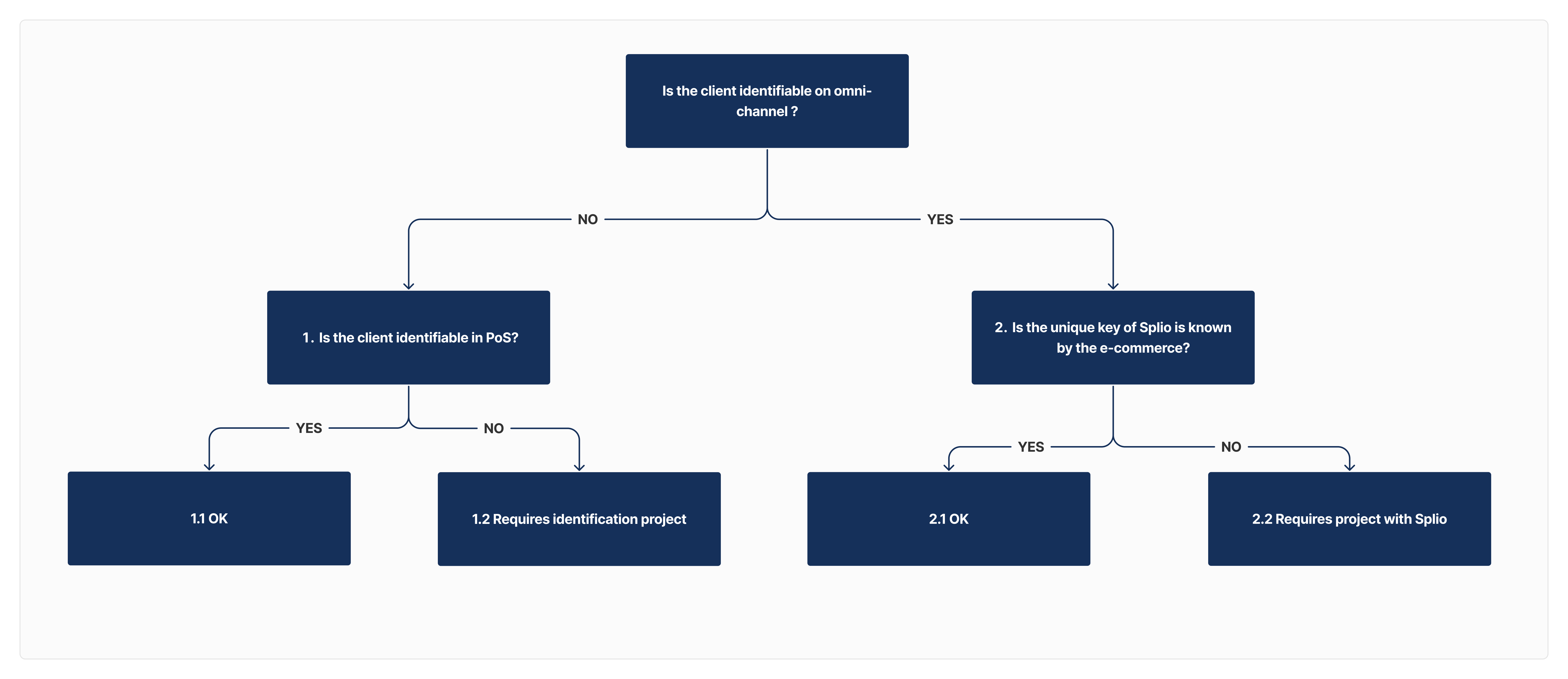Integration concepts
1. Architecture overview
To begin with, it is crucial to gain a comprehensive understanding of your architecture in order to design the most effective integration for your Loyalty program. We recommend starting by creating a list of all the interconnected systems within your ecosystem. Your primary focus should be on the systems that directly impact your end-users, particularly the Point of Sale (PoS) and E-Commerce integrations. Here is a list of some common systems:
| Component | Examples |
|---|---|
| PoS system | Y2, Cylande, TCPOS, Shopify POS |
| E-commerce tool | Magento, Prestashop, Shopify, SFCC |
| CDP / RCU | Splio |
| Identity Provider | Okta, Reach5 |
By identifying and understanding these systems, you can lay the groundwork for building a robust integration and ensure seamless functionality for your Loyalty program.
2. Prerequisites
2.1 Common considerations
Area to Consider | Common Questions |
|---|---|
Splitting Responsibilities between your Systems |
|
Data life cycle |
|
Data volume |
|
Implementation |
|
2.2 Client identification
The prerequisite is to have a customer identifiable by your payment systems. Here, we provide you with a decision tree to assist you in validating this prerequisite or constructing the appropriate project. Before starting you can read more about how to choose your unique key in Splio in this article.

1-Integration Guidelines - Clients identification decision tree
Based on the diagram above, different projects around client identification are possible.
Case | Questions and details |
|---|---|
1.1 Connection project between your PoS and ecommerce | You have the prerequisites to move forward with your project but need to build a connection between your e-commerce and PoS. Go to 2.2 for more details. |
1.2 Identification project with Your PoS |
|
2.1 Prerequisites are OK | You have all the prerequisite for an omnichannel integration and is eligible for the Loyalty Web Kit. |
2.2 Details on Different Cases for E-commerce Customer Identification: |
|
3. Recommendations
3.1 Splitting Responsibilities between your Systems
- In general, we recommend avoiding data duplication to prevent unnecessary traffic and data conflicts between systems.
- Determine the owner (either PoS or E-commerce) based on:
- Depending on whether there is an existing integration with Splio.
- Depending on whether your PoS system is open to 3rd party integration.
- Based on which system has the highest volume.
- During the initial project planning phase, it is advisable to include existing dependencies between systems in your architecture diagram and list the business reasons behind these choices.
3.2 Data synchronization patterns
We recommend adopting asynchronous data synchronization patterns whenever possible. This approach minimizes dependencies and allows systems to operate independently, enhancing overall resilience and performance.
Our platform is primarily designed to operate asynchronously, aligning with our AI-focused positioning. Asynchronous processing offers several advantages, including improved scalability, reduced costs, and enhanced flexibility in managing data flows.
It's crucial to carefully assess the benefits for end customers and evaluate the effort and risks associated with synchronous implementations. We describe in this article on rewards management the most common integration scenario.
3.3 Resilience and System Interdependencies
Avoid creating dependencies between systems due to chaining different systems. Maintaining resilience is vital in system integration. It's advisable to avoid chaining different systems and minimize scenarios where one system is dependent on the response of another. By reducing interdependencies, you ensure the smooth operation of your architecture, enhance system reliability, and mitigate potential bottlenecks. Important considerations:
- Error management
- Retry strategy
- Network failure and catch-up management
By carefully considering these data synchronization patterns and prioritizing asynchronous communication, you can design a resilient and efficient integration for your Loyalty program.
4. Existing connectors
Splio provides a wide range of connectors in the ecosystem, either built by us or by our partners. Please refer to this documentation to have an overview. In the case of an existing connector, you will be able to focus on other areas of the project.
Updated 4 months ago
